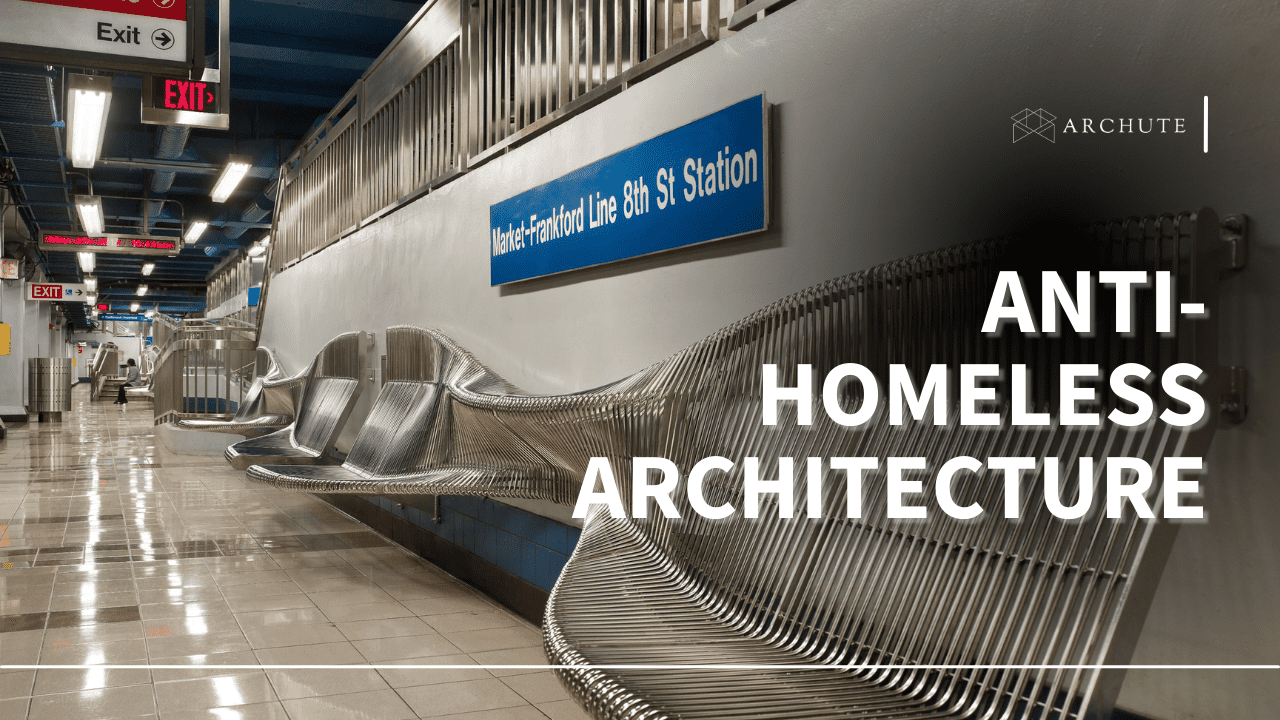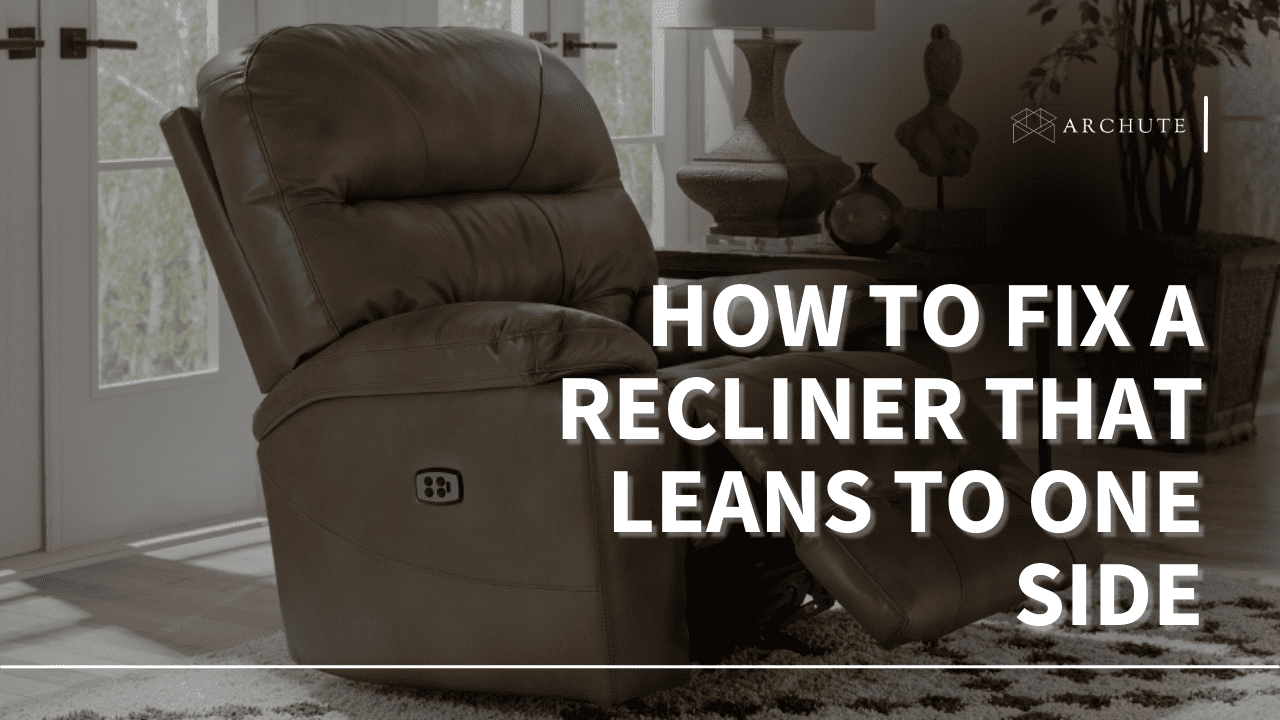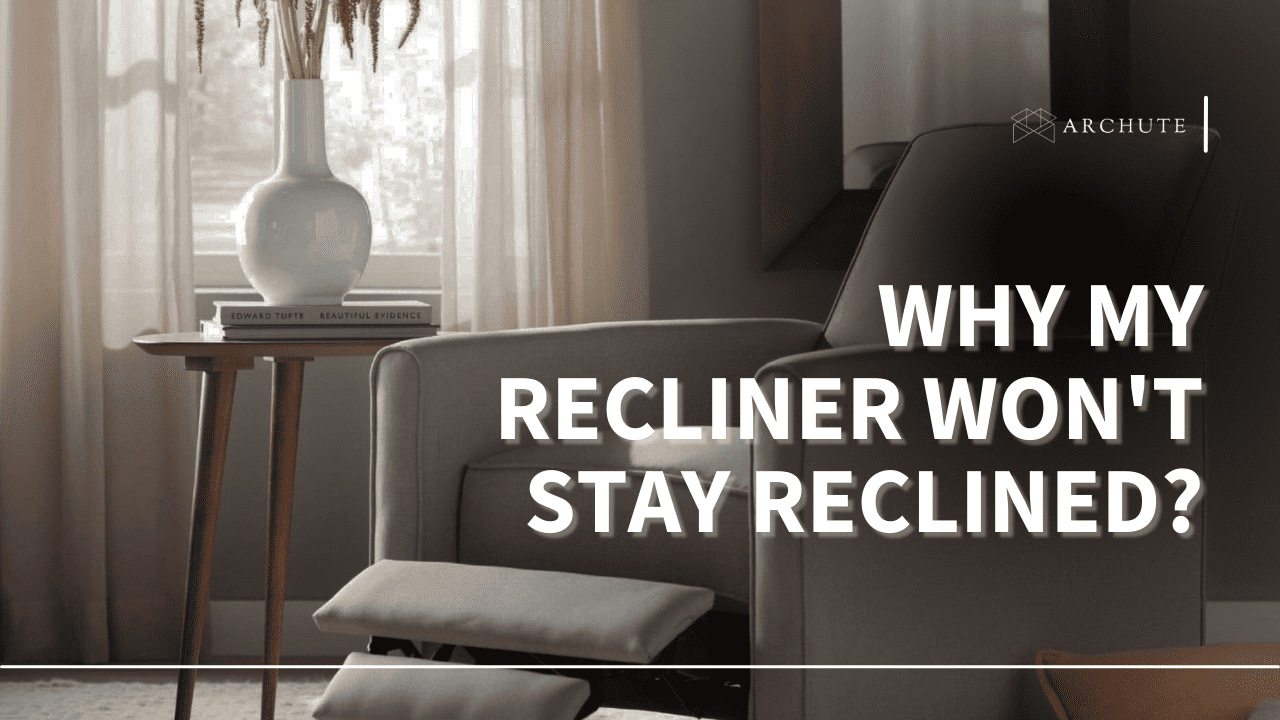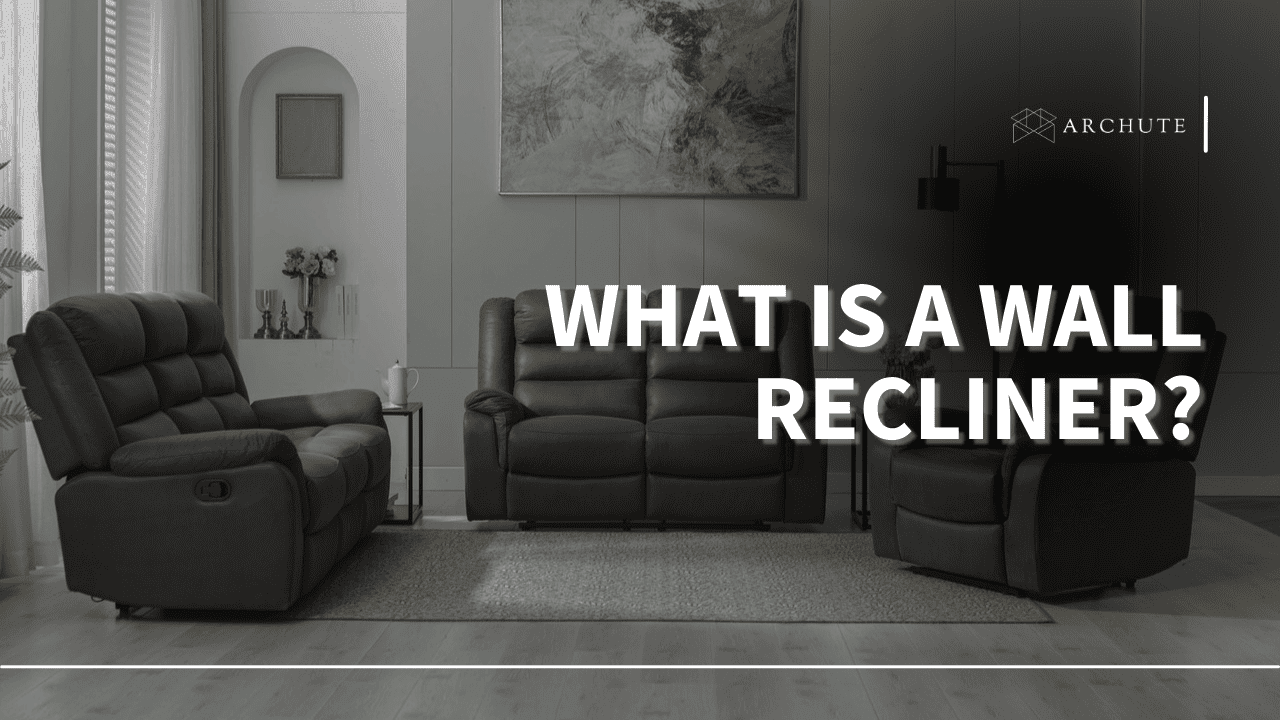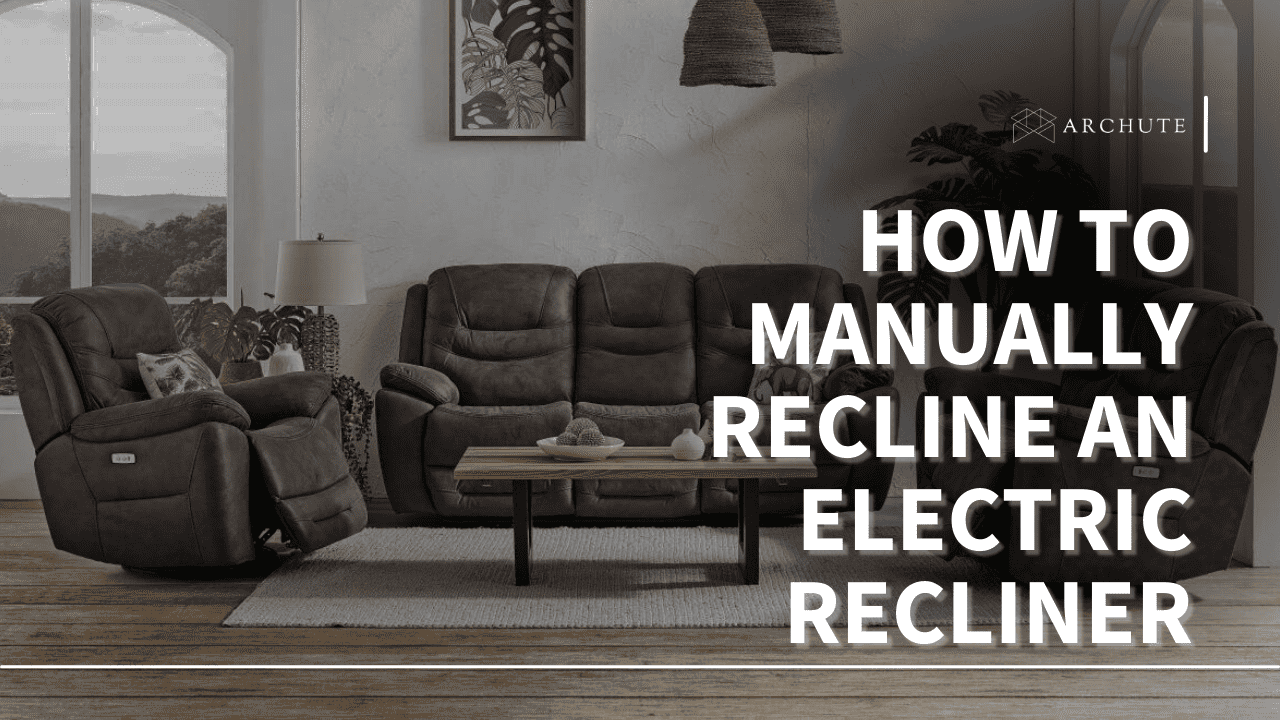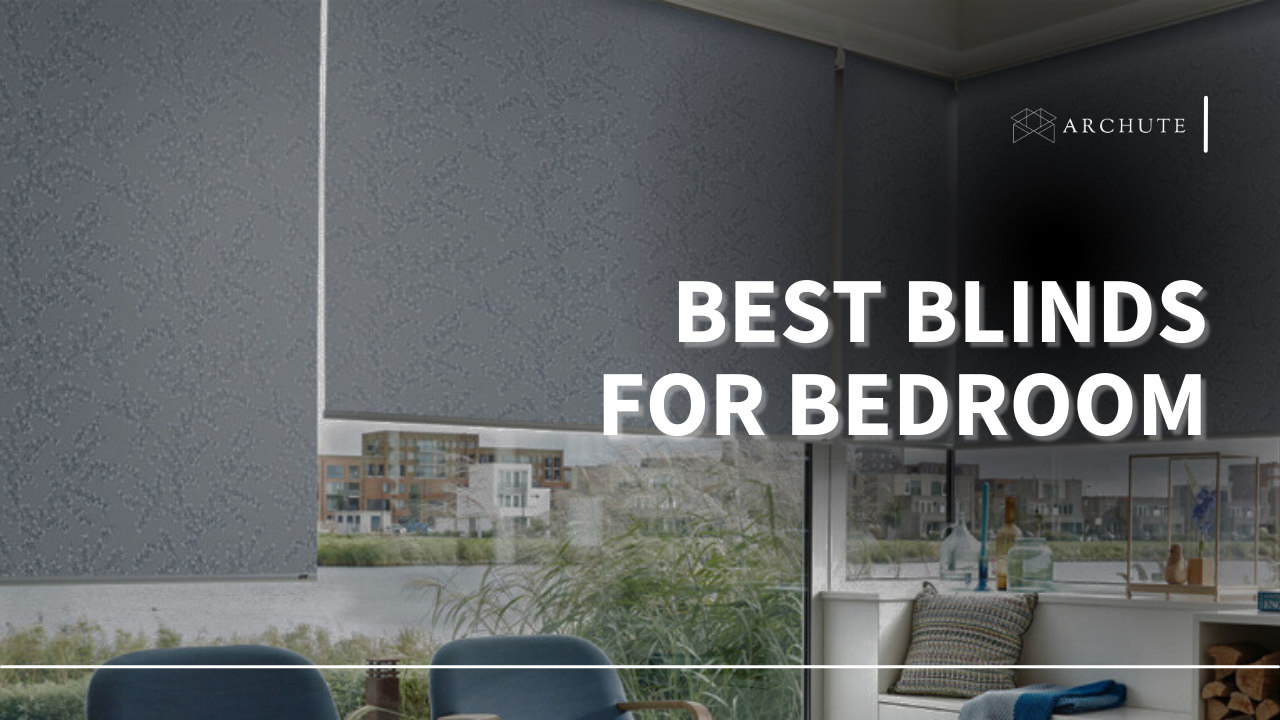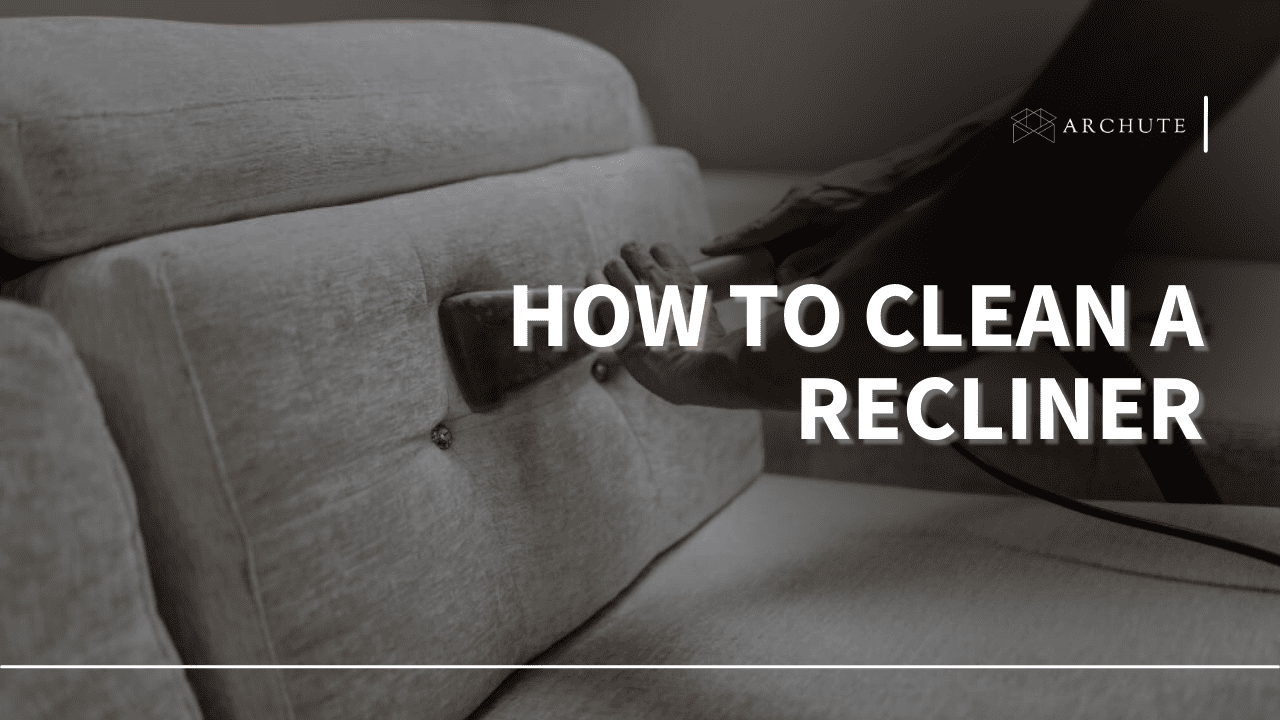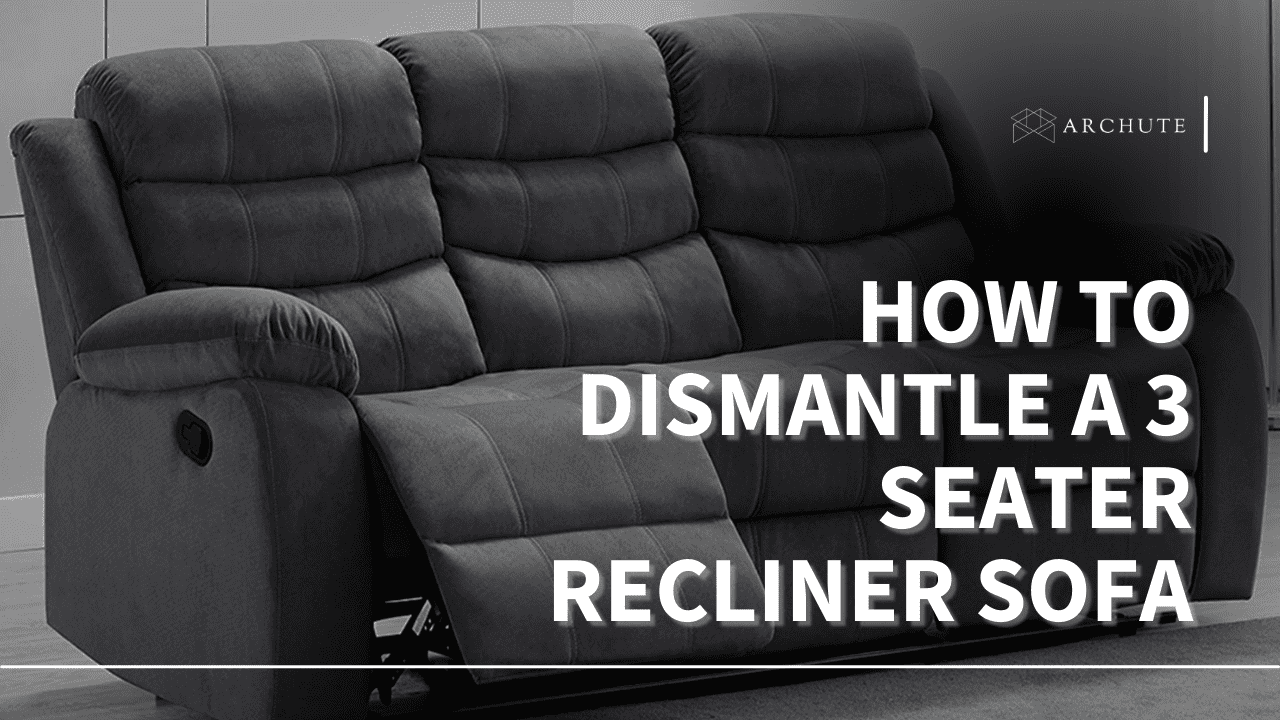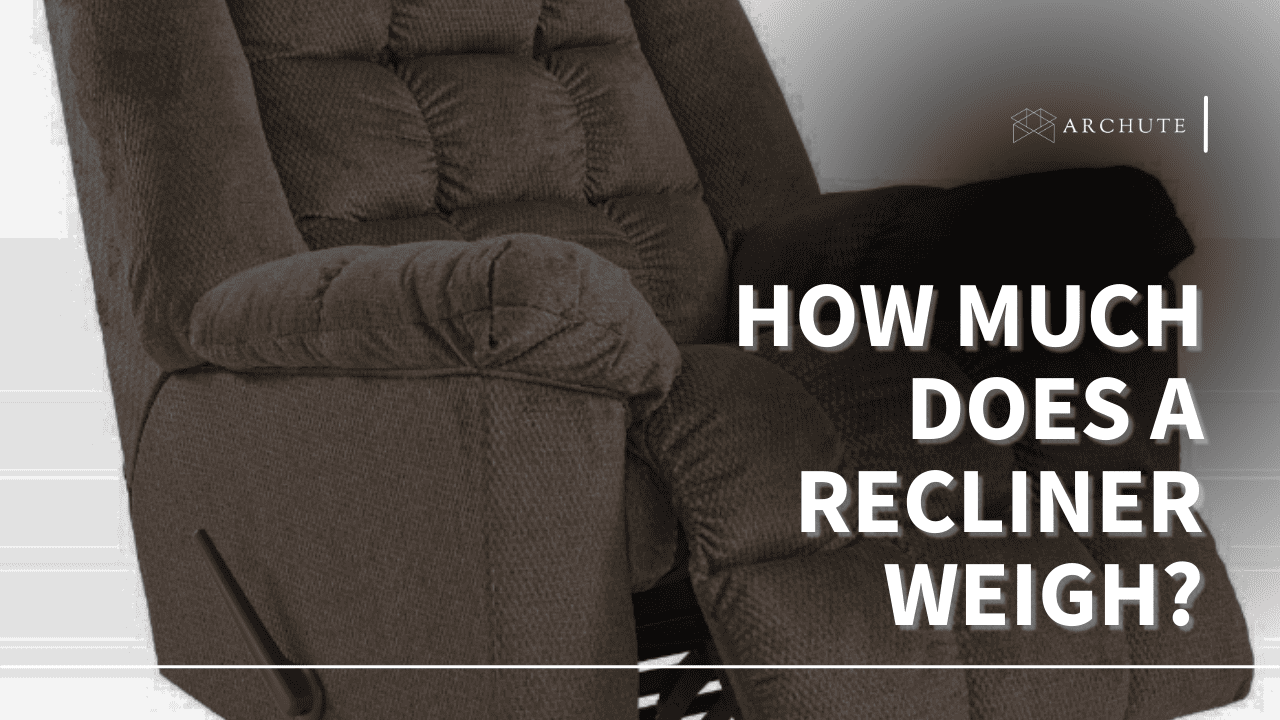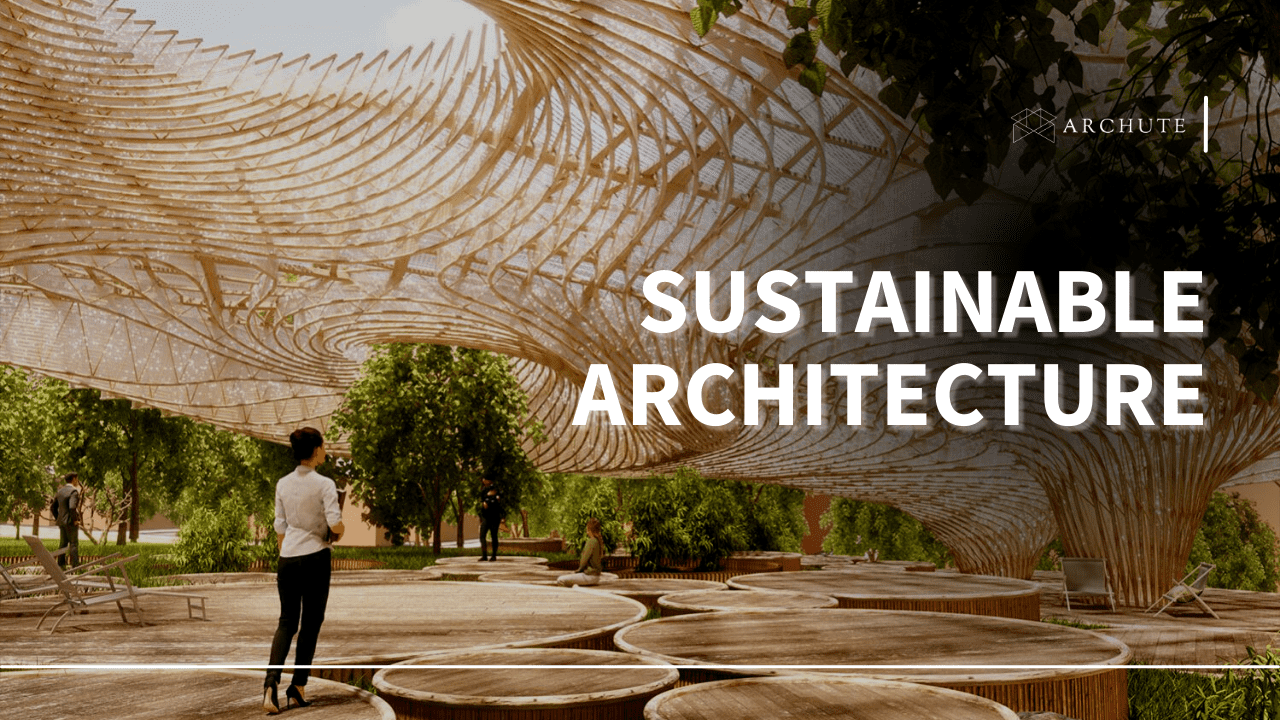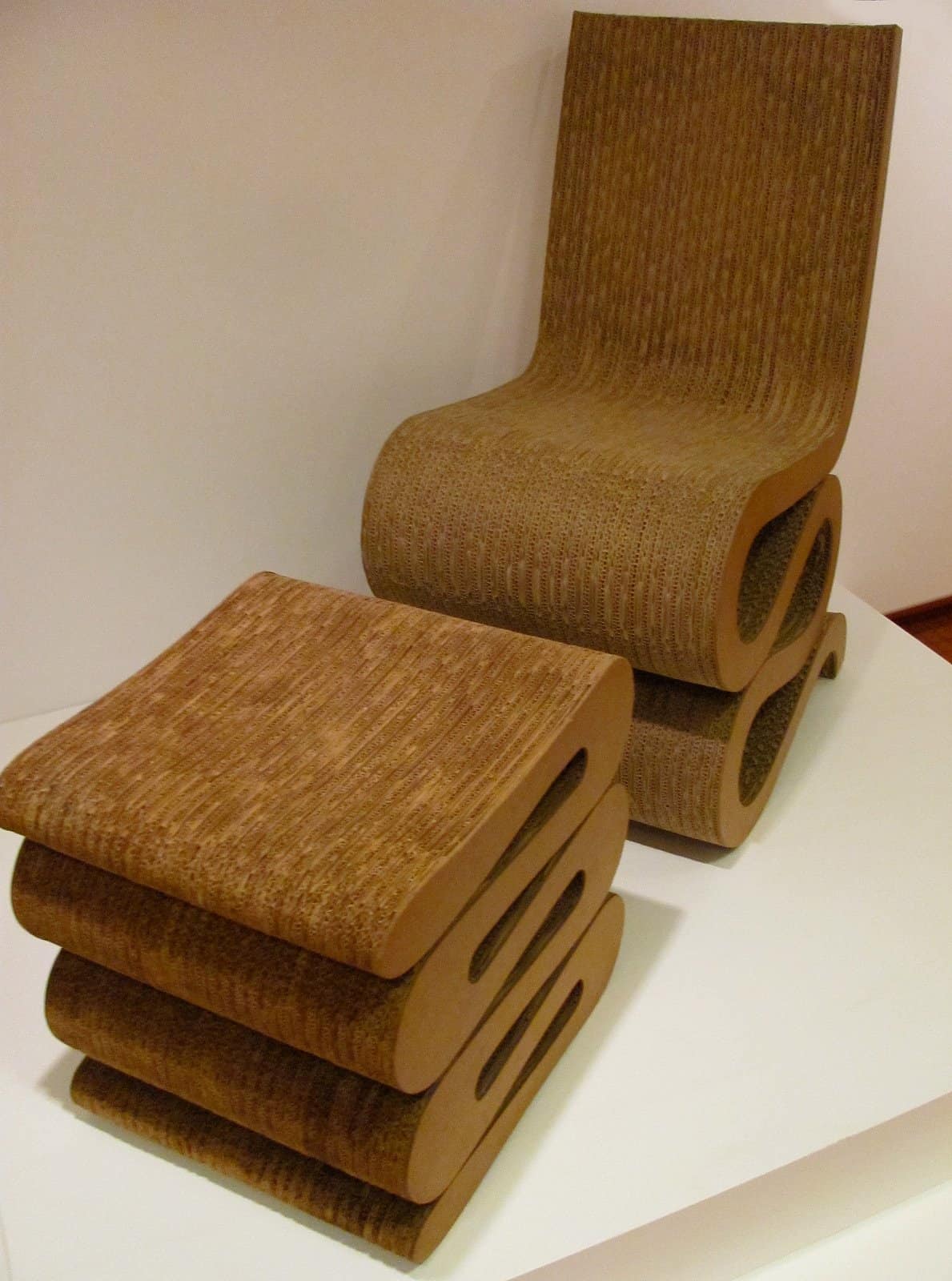Ever seen slanted benches at bus parks or railway stations and get baffled by how uncomfortable it can be to sit or lie on them? This design feature is called anti-homeless architecture, also known as hostile architecture. The undeniable truth is that these benches are designed this way to prevent people from lying on them, keeping the homeless away.
With the increased urbanization, people have flooded cities, and there is a high population to deal with. One of the effects of the high population in urban centers is homelessness. Consequently, people are seen seeking refuge from public spaces. Since this is not a move welcomed by all, architects and designers, have invented strategies to use the built environment to deter homeless populations from residing in these areas.
Dive in as we delve into the ongoing influence of this controversial architectural style.
What Is the Purpose of Anti-Homeless Architecture?
Anti-homeless architecture is an urban planning technique that uses components of the built environment to consciously limit homeless people from seeking refuge in certain public places. This design restricts the physical behaviors of comfortably lying down or sitting, and it frequently targets homeless people who use public spaces for shade and shelter.
What Are the Key Elements of Anti-Homeless Architecture
In public places, you will find structures designed to prevent people from sitting or sleeping on them. These structures include benches, under bridges, streets, building corners, and heat grates, among other things. All these structures will have specific designs in them, including:
1. Benches
Benches are usually a go-to for homeless people looking to rest. To combat this, city governments have modified benches, making them as uncomfortable as possible while still serving their primary purpose. Here are the most common examples of hostile bench designs you can find in most public spaces.
i) Slanted Benches
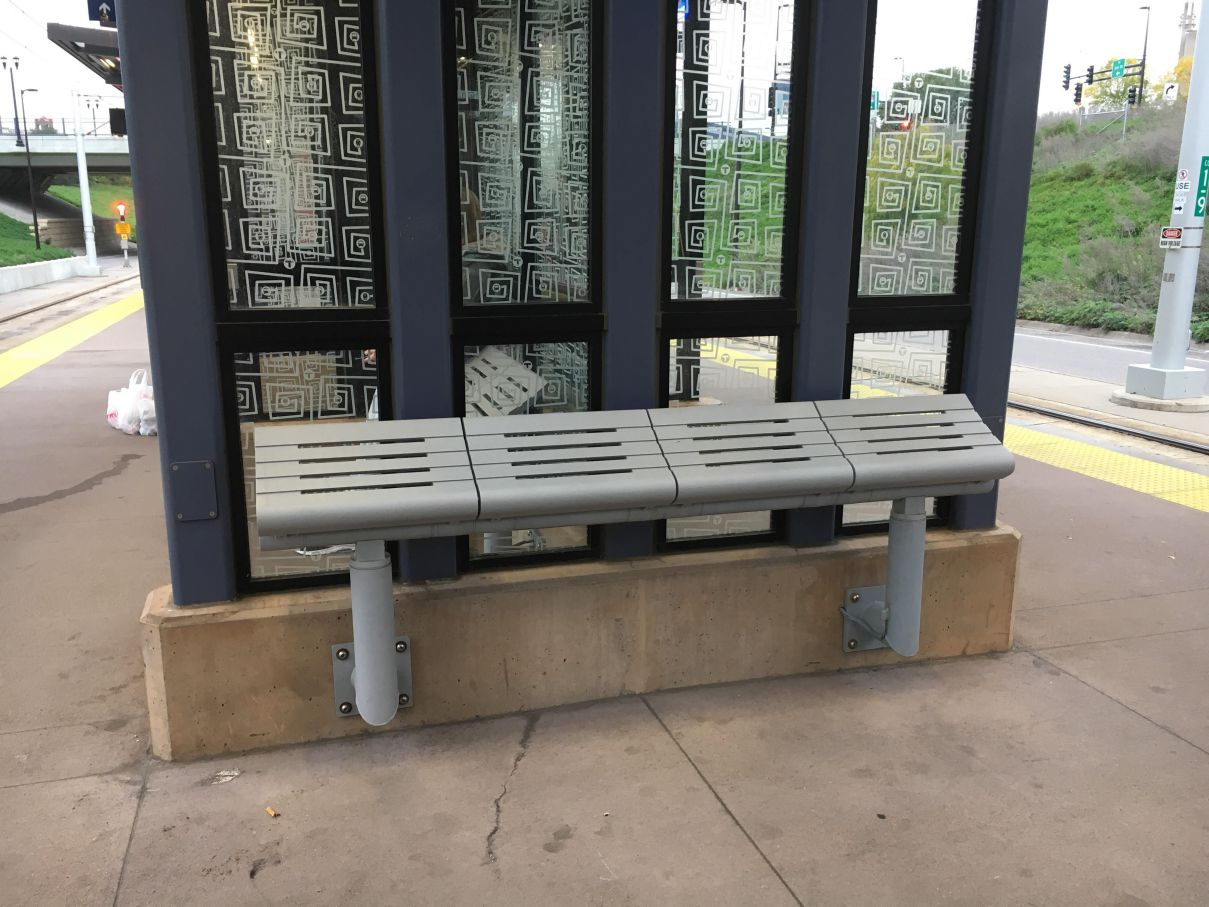
Image Source: interestingengineering.com
Slanted benches are a familiar sight at bus stops or train stations. These types of benches are quite uncomfortable to sit and lie on. The bitter truth is that they are specifically designed like this to make them impossible to lie on.
ii) Armrests on Benches
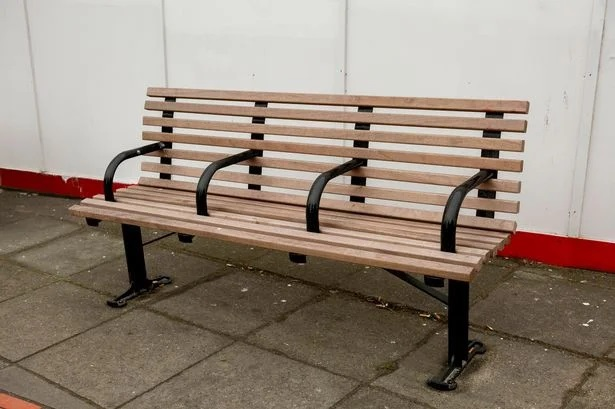
Image Source: reddit.com
The armrests on the park benches may seem harmless while on the surface. However, they are a feature designed to prevent people from lying on benches. The armrests inhibit people from lying across benches, making it impossible to sleep on them.
iii) Segmented Benches
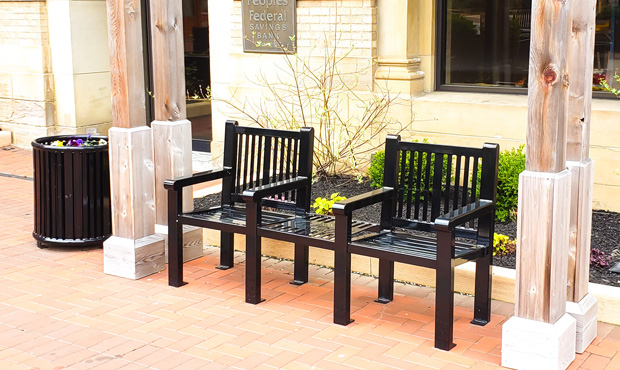
Image Source: keystoneridgesdesigns.com
Anti-homeless architecture designs benches with imprints or bowl-shaped grooves to identify where people can sit. Like other alterations to benches on this list, the reason behind segmented benches is to make sleeping on benches impossible.
IV) Curved and Slanted Benches
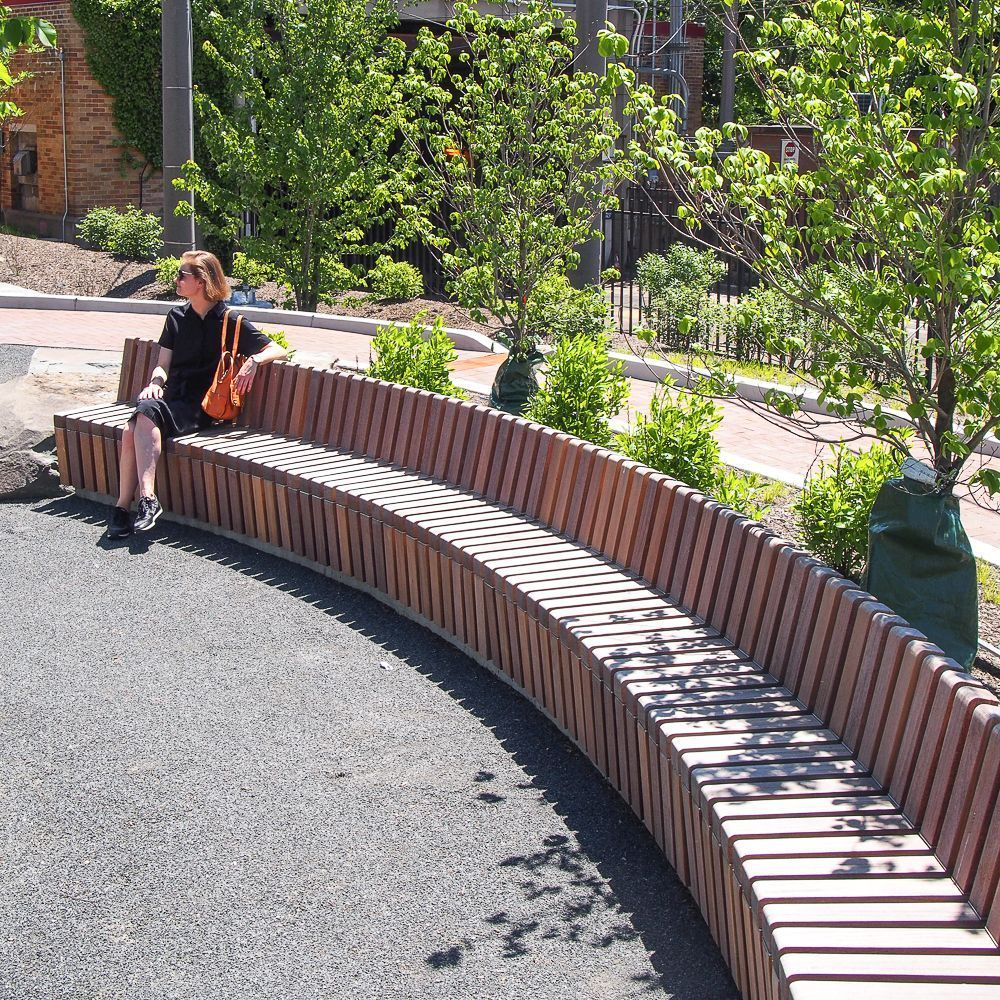
Image Source: pinterest.com
Like the other bench designs on this list, benches curving around or slanting is another anti-homeless design that deliberately attempts to deter homeless people from sleeping rough. They prevent people from fully stretching out, making it practically impossible to sleep or sit comfortably.
2. Rocky Pavements
Another conspicuous part of anti-homeless architecture is the uneven pavements with rocks protruding from the ground. This feature is probably meant to prevent people from sitting, sleeping, or loitering around that area.
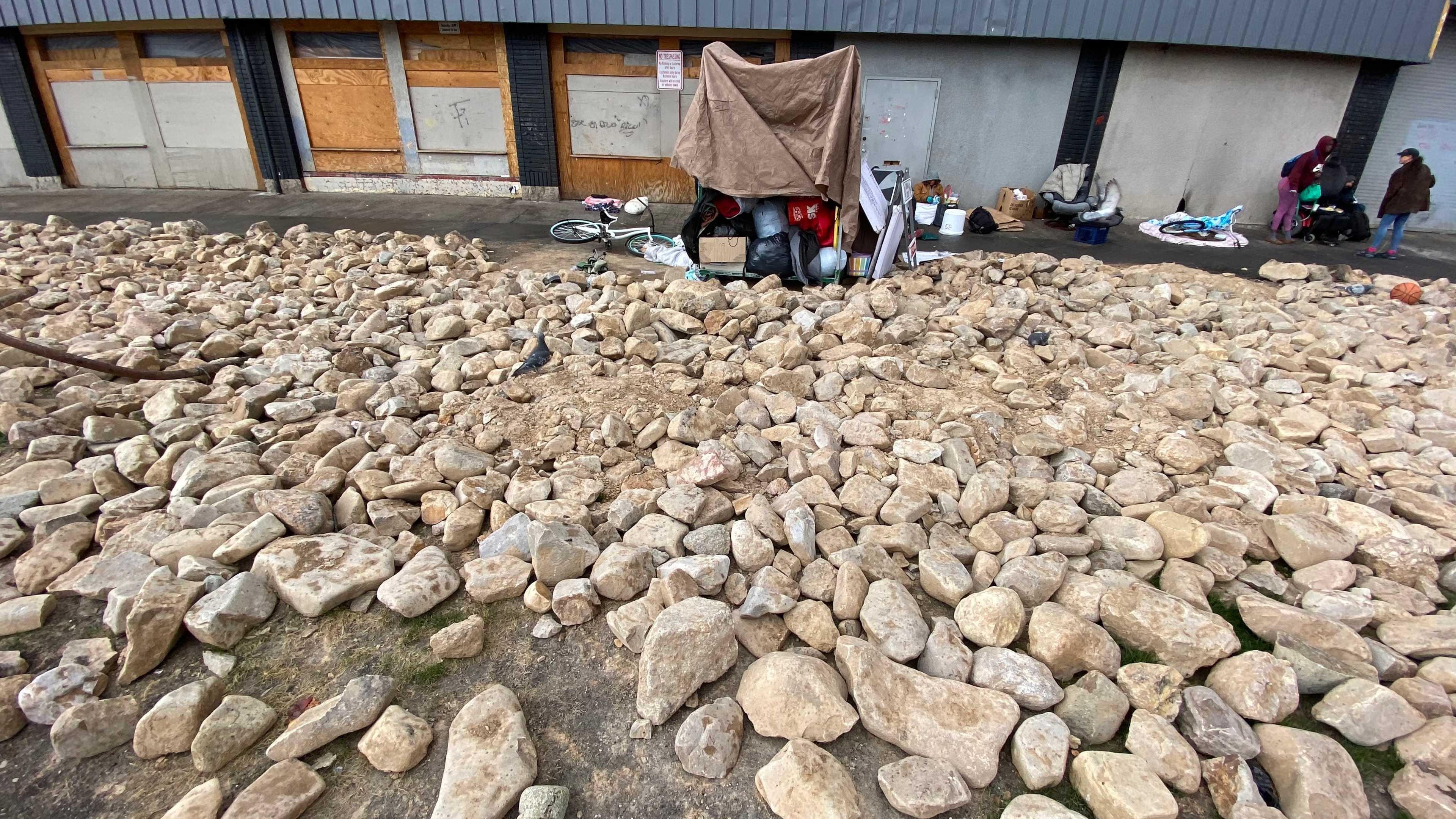
Image Source: sltrib.com
Rocky pavements are common under awnings, nooks, and small spaces outside buildings or other shelters where people will most likely try to take refuge.
3. Spiked Windowsills
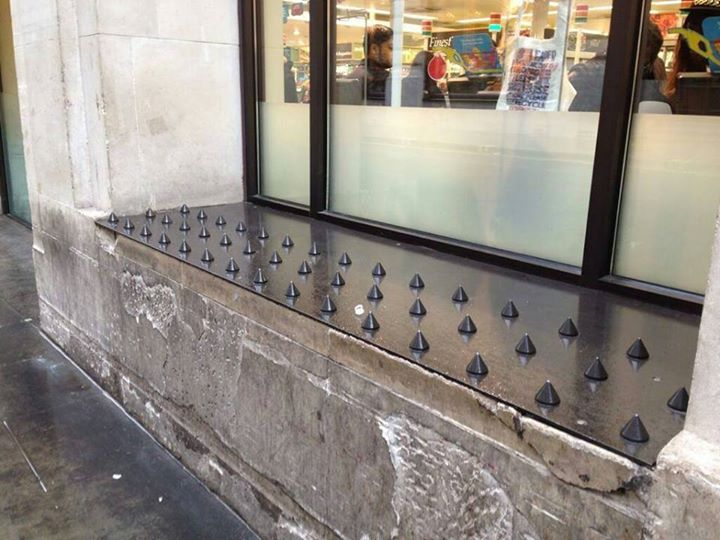
Image Source: railernews.org
Many modern and traditional architecture feature spiked windows and walls in cities, usually to deter birds from roosting. However, with anti-homeless architecture, windowsills at ground level are being spiked too to prevent people from sheltering or sitting under the awnings of windows. Unlike brutalist architecture, this anti-homeless design is more restrictive than appreciative.
4. Street Spikes
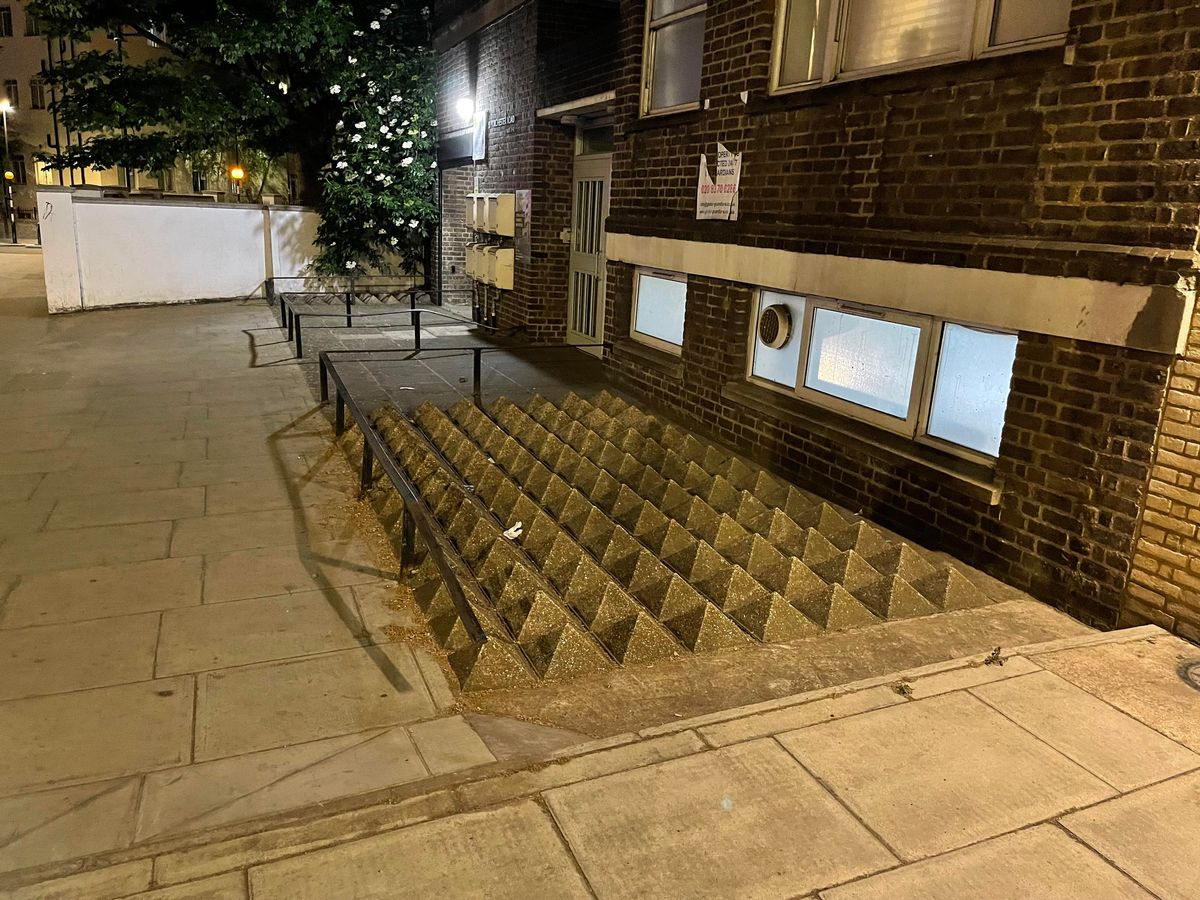
Image Source: mylondon.news
In addition to rocks and stones, spikes have become familiar on the streets. Perhaps this is the most outwardly hostile urban design of anti-homeless architecture. The spikes are usually made of metal or concrete; you can find them near doorways, outside shops, under bridges, or other sheltered private and public places. This defensive architecture aims to ward off homeless people looking for a spot to sleep.
5. Street Dividers
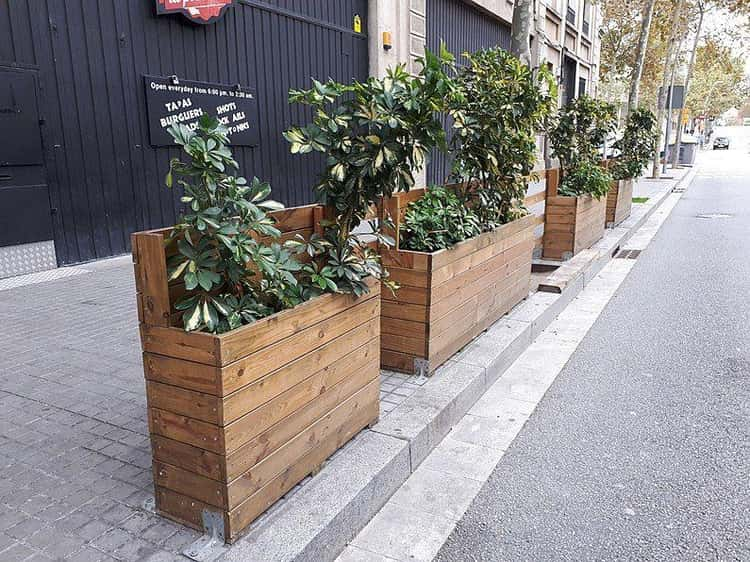
Image Source: ranker.com
Greenery is usually a welcoming sight in the city. With the refreshing flash of green in concrete streets, these planters often direct traffic towards sheltered areas. However, these dividers can also be an attempt to keep the homeless away from the sheltered side of the streets, leaving them without a clear ground patch to sleep on.
6. Raised Grate Covers
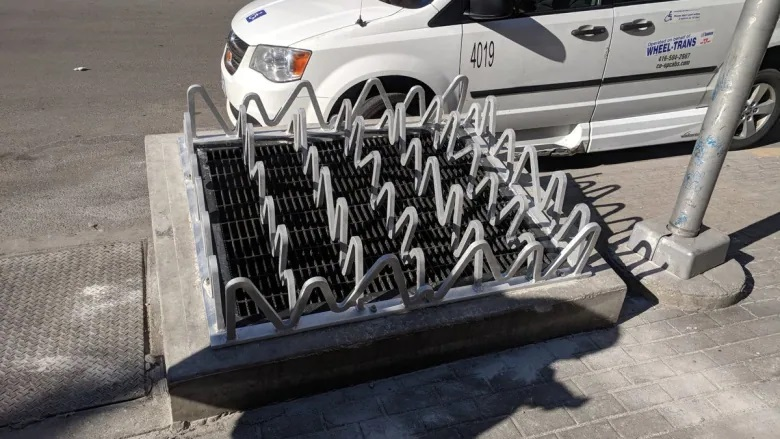
Image Source: cbc.ca
Raised grate cover is an anti-homeless architecture that may look abstract, but in reality, they prevent homeless people from sleeping on the grates. During colder seasons, homeless people normally seek grates and vents to sleep on because of the warmth they release. So the placement of these structures on grates keeps them from sleeping on the grates and staying warm during the cold seasons.
7. Fenced-off Heat Grates
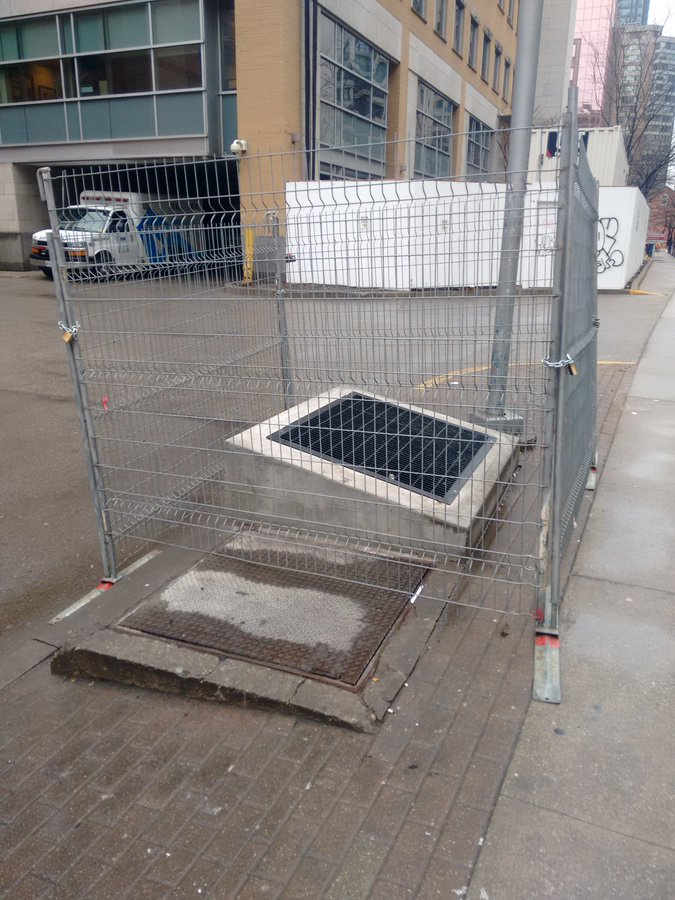
Image Source: intrestingengineering.com
Like the raised grate covers, fenced grates is also a typical example of how to spot anti-homeless architecture. They are also an aspect of hostile architecture that attempt to keep homeless people from huddling around the grates for warmth during cold weather. Grates are common in the winter and are some of the few sources of warmth that homeless people can rely on when the temperatures drop.
8. Retractable Spikes
Retractable spikes are another form of hostile design because the spikes can be pushed up at night to keep people from sleeping outside the buildings. This design allows premises to look open and welcoming during the day, making the shoppers comfortable without the sight of the defensive design.
Retractable spikes are always identified as metal discs leveled with the pavements’ flat surfaces outside certain buildings.
9. Boulders Under Bridges
Bridges offer large amounts of shelter. Therefore, they are common spots for homeless people who sleep rough. To control the number of people sleeping under bridges, many cities place boulders or large stones covering the pavements. Therefore, only the roads are left clear, without safe spaces for homeless people to sleep.
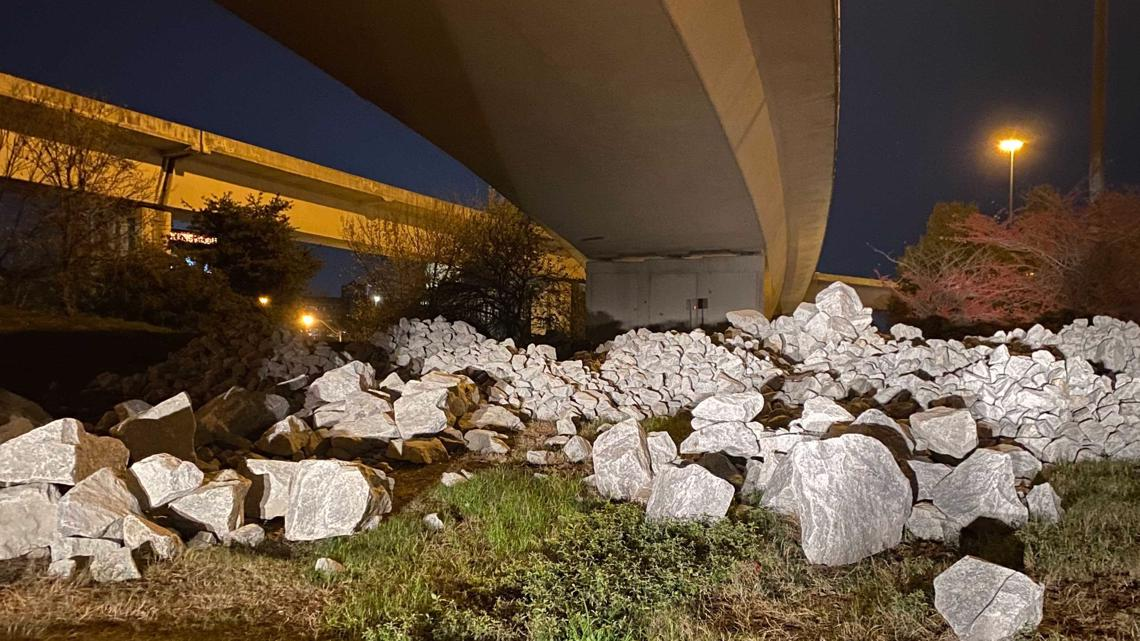
Image Source: 11alive.com
As planters mask their hostility behind turning the space green, rocks and boulders can achieve the same goal in a much more grey fashion, be it under bridges, on pavements, or in other sleeping spots.
10. Tiered Seating
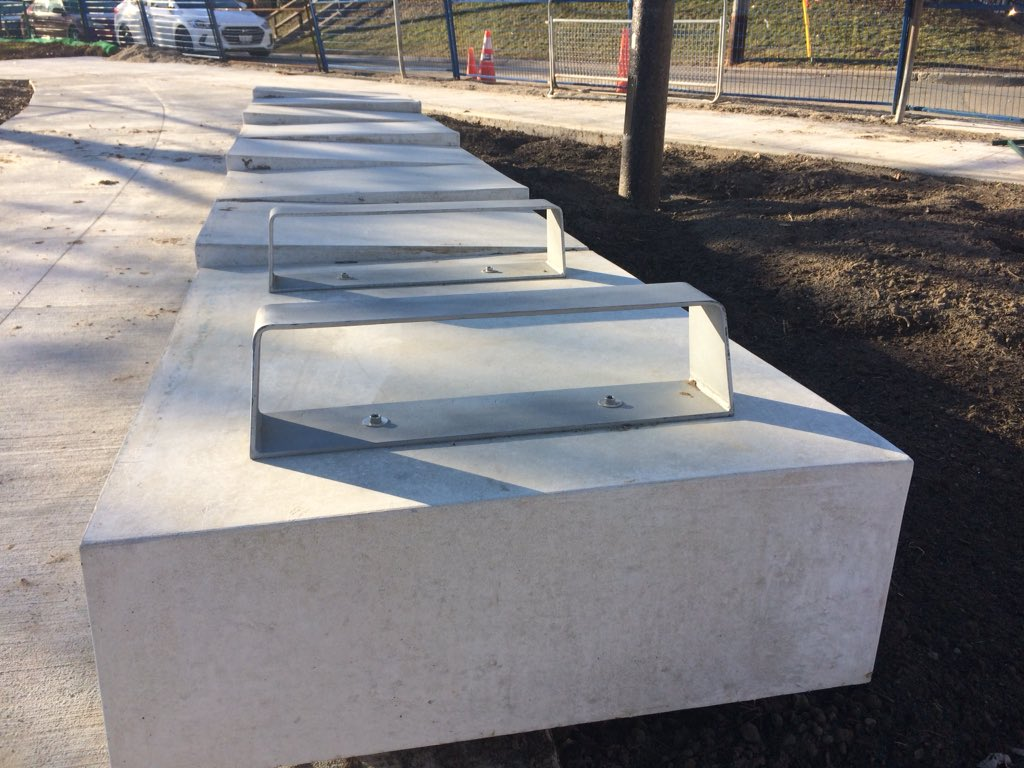
Image Source: interestingengineering.com
Tiered seats are rows of seating placed or constructed directly behind each other on a sloped tier. Some designs of the tiered structure make it difficult to stretch out and be comfortable enough to rest. Like the anti-homeless benches, tiered public seats are designed purposely to prevent those looking for places to sleep.
11. Awning Gaps
Awning gaps are another critical feature of anti-homeless architecture that is both decorative and practical. This substantial gap between the wall and the building’s awning is to stop people from leaning against the wall while remaining under the awning. Mainly, the awning gap is intended to prevent homeless people from taking shelter in those places.
12. Barred Corners
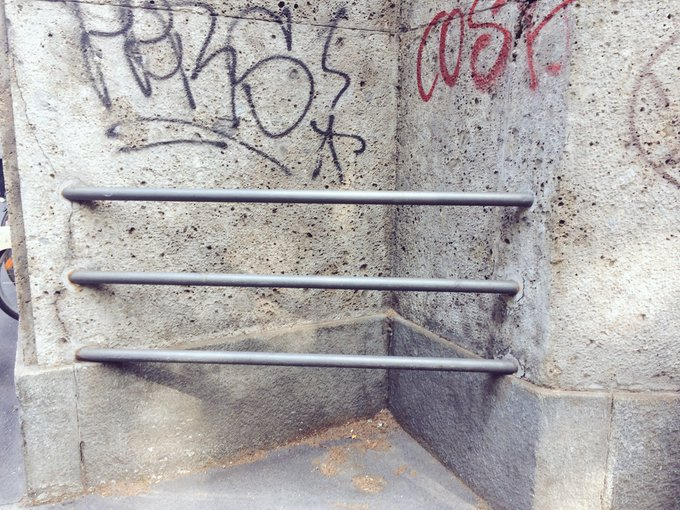
Image Source: interestingengineering.com
Another common anti-homeless architecture element is the barred corners. This is mostly in the form of blocked or fenced-off corners across streets. The city officials normally claim this design aims to discourage individuals from loitering, begging, or finding shelter there.
Examples of Anti-Homeless Architecture
Now that you know the elements of anti-homeless architecture, you might be curious to see some examples. Here are some structures inspired by anti-homeless architecture;
1. Camden Benches in London

Image Source: ianvisits.co.uk
The Camden bench is a perfect example of an anti-homeless structure for its ability to regulate its use strictly. Its irregular curves make it difficult for people to lie on it. Camden bench was custom-built by Camden London Borough Council and unveiled to the public in 2012 and has since faced harsh backlash. The leading public criticism is that it addresses the symptoms of social issues, for example, homelessness, rather than their causes.
2. Locked Bench in Volgodonsk, Russia
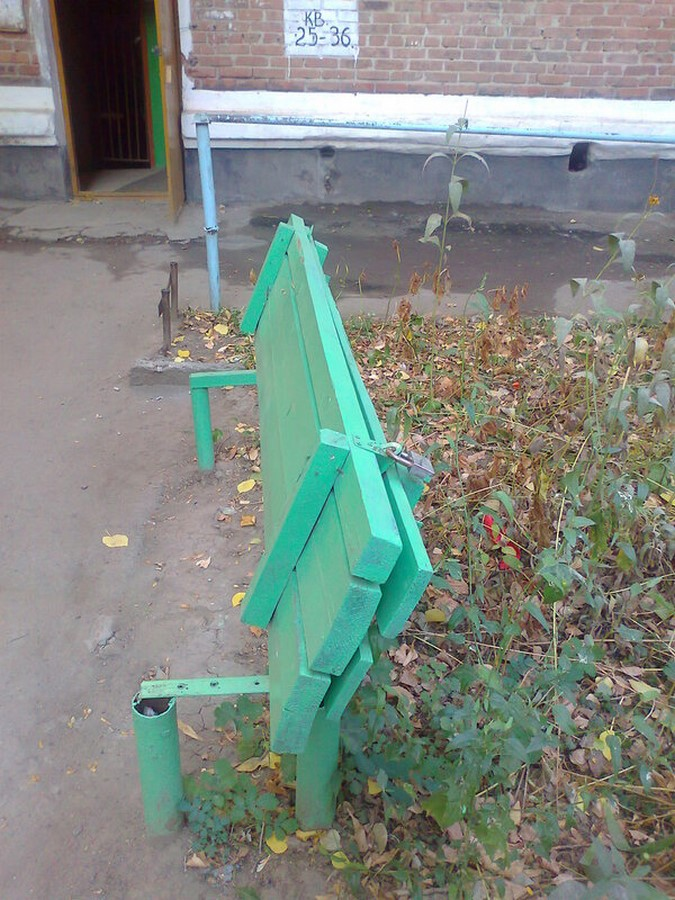
Image Source: re-thinkingthefuture.com
This bench is one of the prominent anti-homeless structures in Volgodonsk. It is locked up at night to prevent it from being used. However, the precise reason for this locking is unknown, but it is possible to think of several homeless people who would benefit from a place to sleep, but their presence is often unwanted.
3. Jagged Rocks in Accra, Ghana
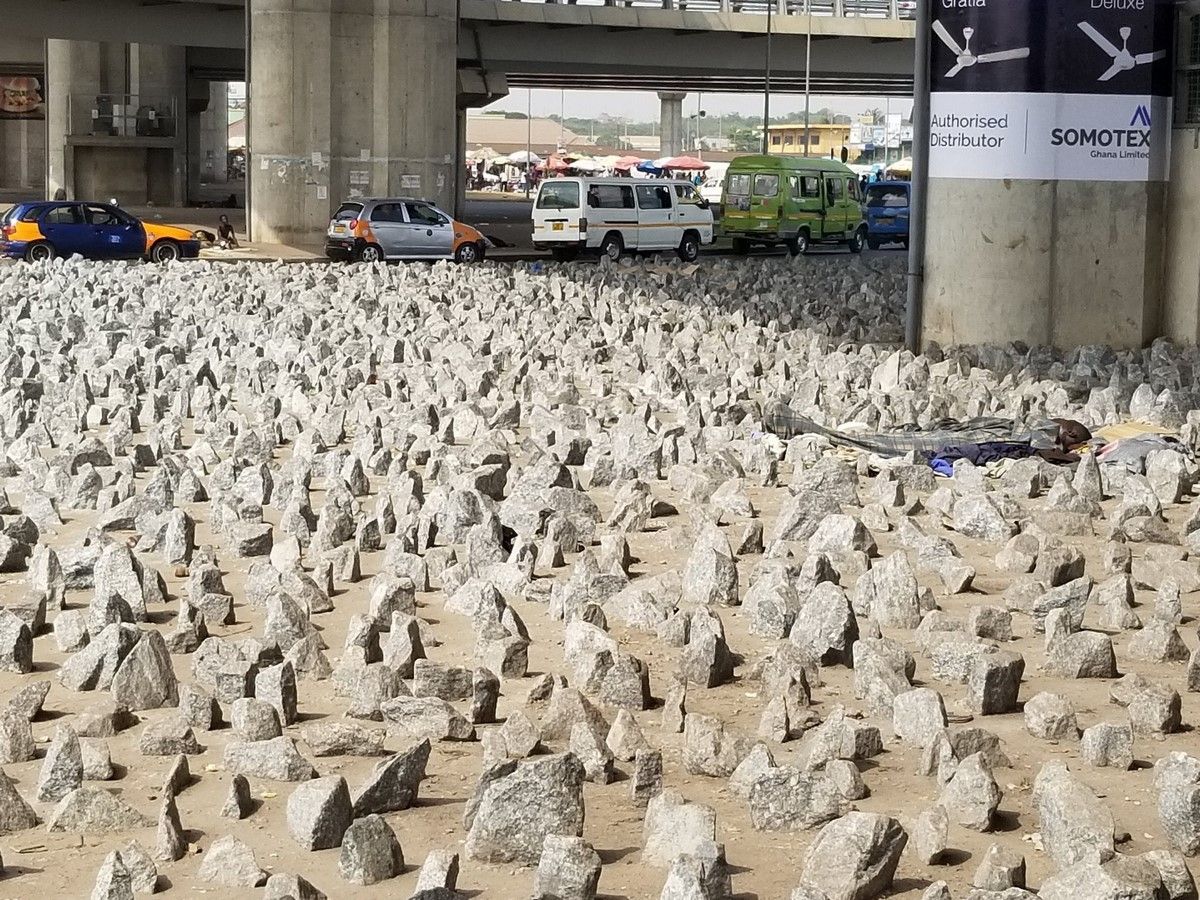
Image Source: archdaily.com
In Ghana, several jagged rocks are scattered on the ground to inhibit homeless people from taking refuge in those areas. This hostile architecture is evidently serving one purpose: keeping the homeless away from wherever it is installed.
4. Unorthodox Benches in Tokyo, Japan
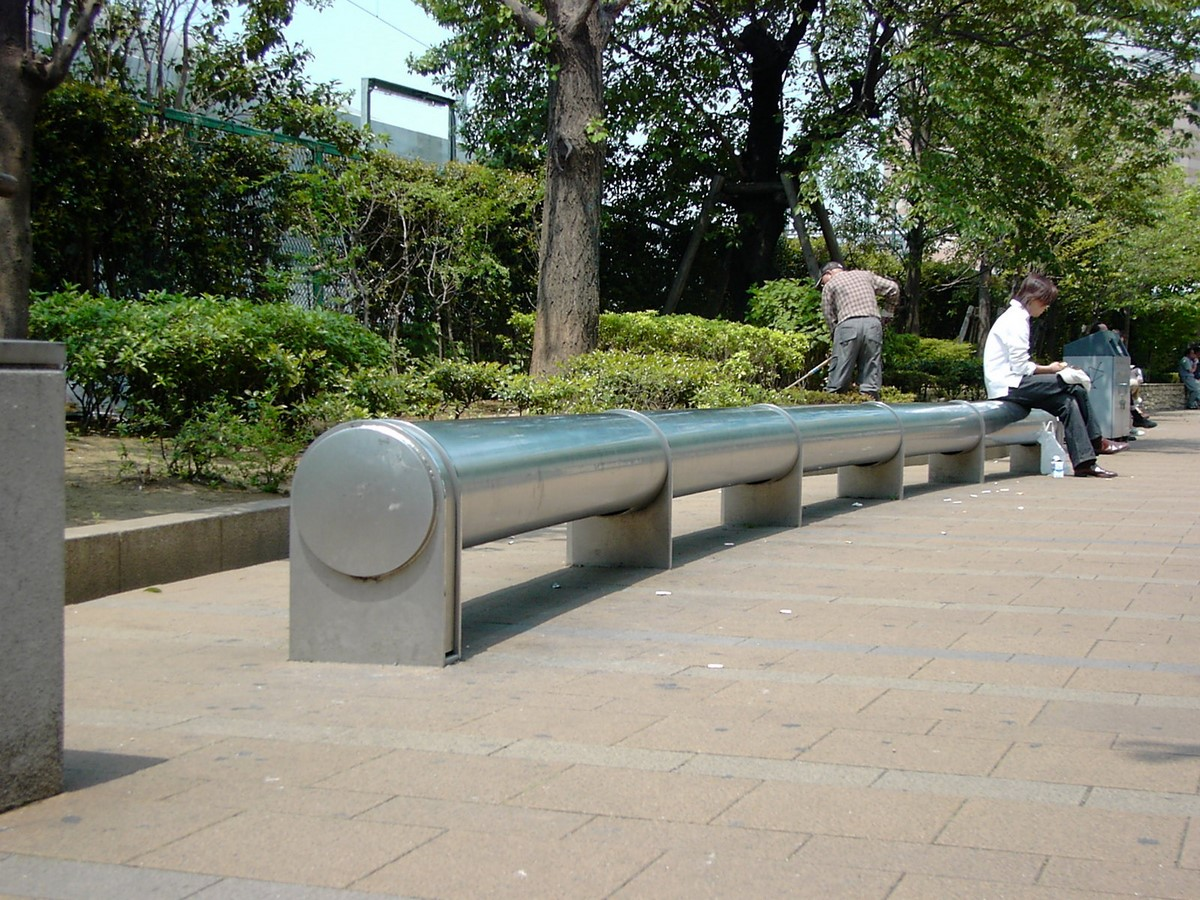
Image Source: re-thinkingthefuture.com
These benches are designed using unorthodox designs, making it difficult for individuals to lie down or relax on them. Besides the shape, this metallic bench gets very cold in the winter and hot in the summer, making it unpleasant to repose for the public, not only the homeless.
5. Anti-Loitering Spikes in Mumbai, India
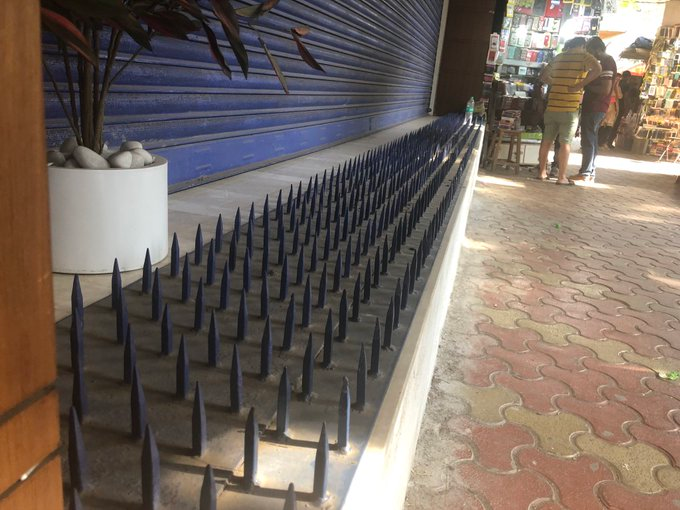
Image Source: ibtimes.co.in
Several rows of sharp metal spikes installed at the façade of an HDFC Bank branch in Mumbai is another perfect example of anti-homeless architecture. According to the bank’s statement, these metal spikes were installed to reduce loitering. However, the locals were quick to point out the potentially disastrous outcome should a person accidentally fall on them. Also, it is clear that a person cannot sit or lie on the spikes to rest or take shelter.
6. Metal Studs in Adelaide, Australia
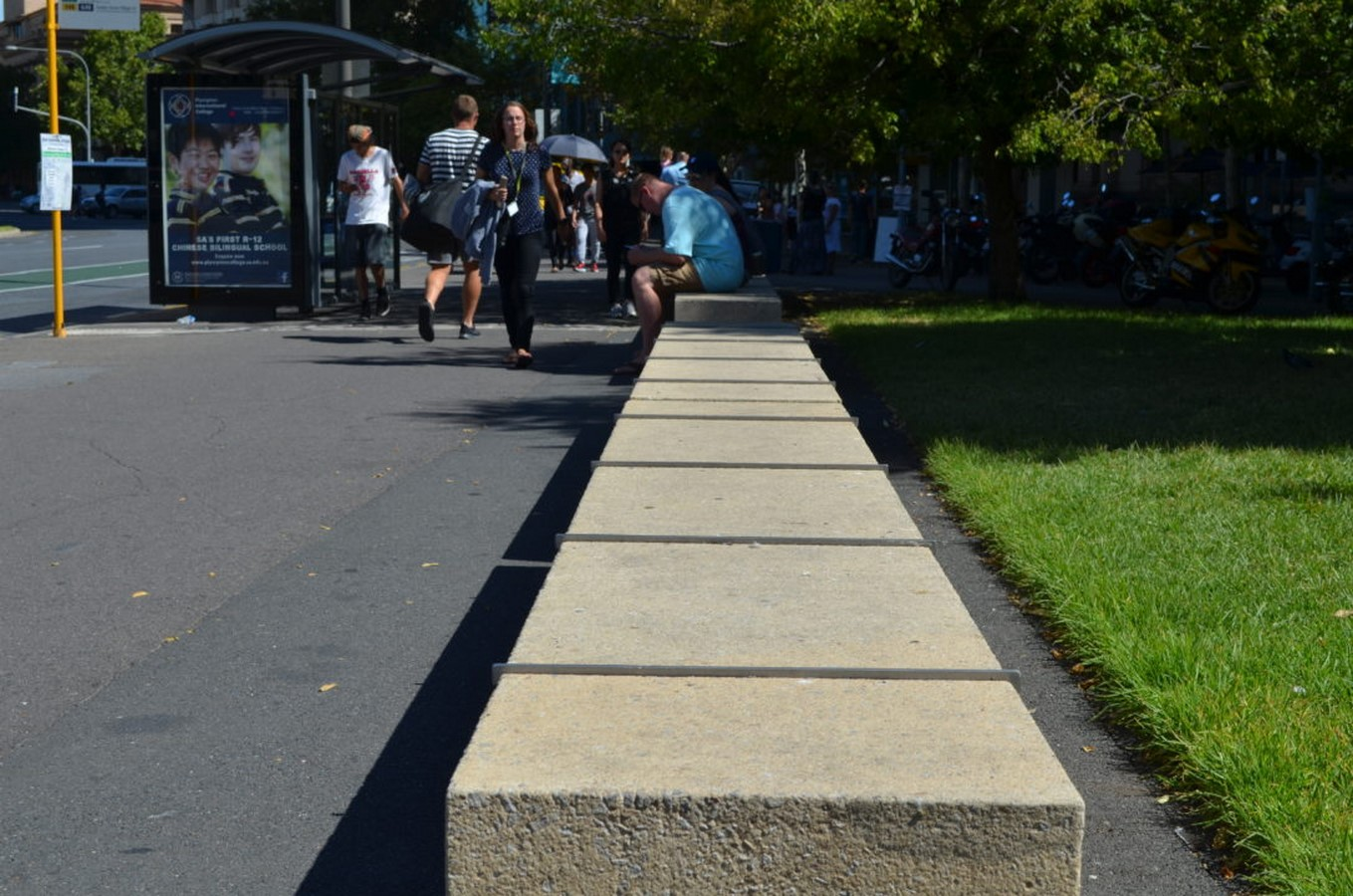
Image Source: re-thinkingthefuture.com
In Adelaide’s CBD, several metal elements can be found, along with benches, fountains, and walkways. However, the city maintains that this design is only to prevent skateboarders from grinding on these structures, making them a form of hostile architecture looking to control public use. Regardless of the official objectives, these metal studs also deter people from lying down to rest.
7. Ghost Amenities in Toronto, Canada
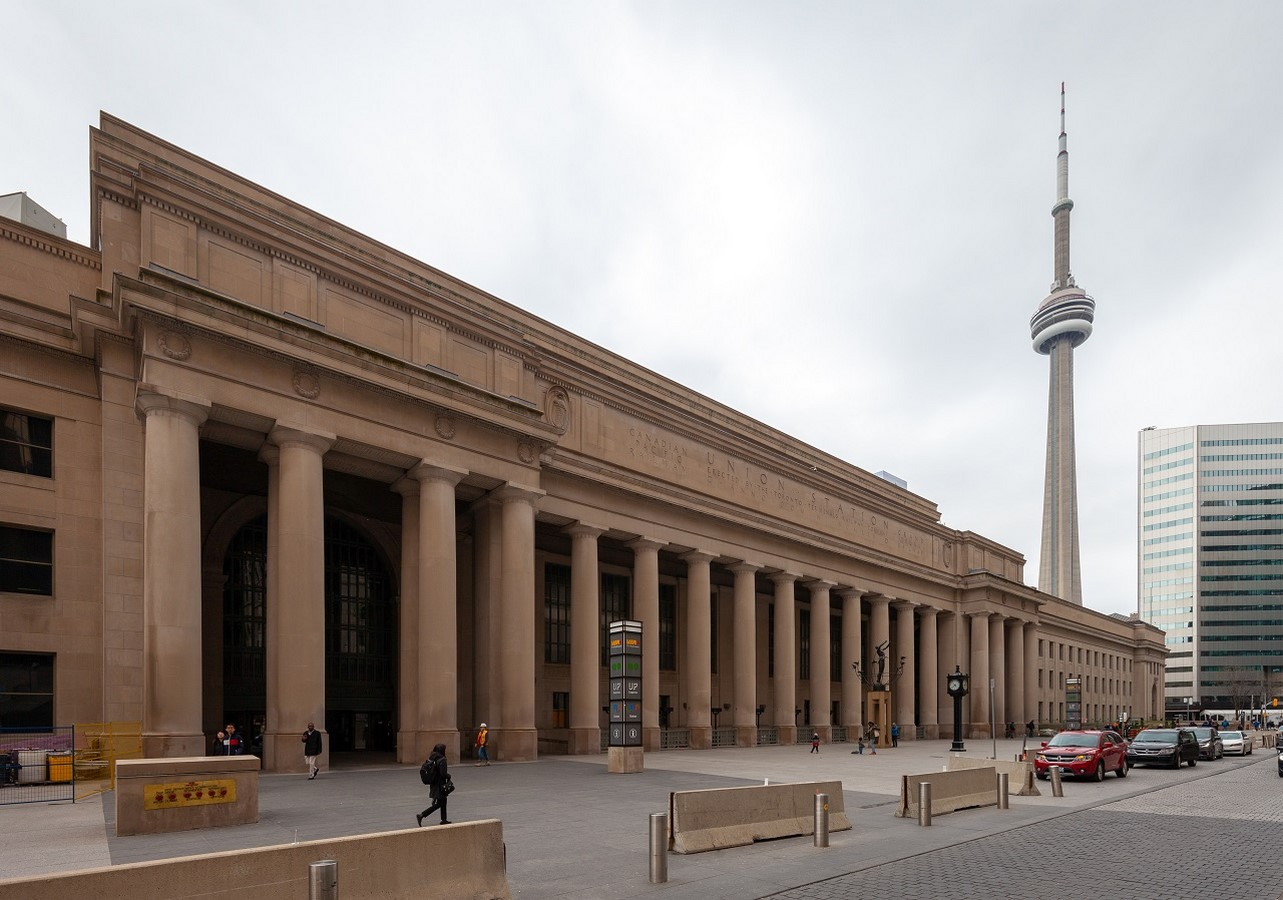
Image Source: re-thinkingthefuture.com
The premises feature a glaring absence of facilities in a public space. While this could be intended to cut costs and reduce maintenance, vandalism, and loitering, it also disproportionately affects vulnerable people. The absence of amenities such as benches, picnic tables, places that offer shelter and shade, and public washrooms, among other things, makes this place a hostile environment for homeless people and the public.
8. Blocked Spaces in France
Several materials and shapes are used to control the unrestricted use of privately owned public spaces in France. While these elements masquerade as art, they are undoubtedly hostile. Irrespective of their physical appearance, they share the ability to make communal spaces less open and accessible, preventing homeless people from comfortably lying down.
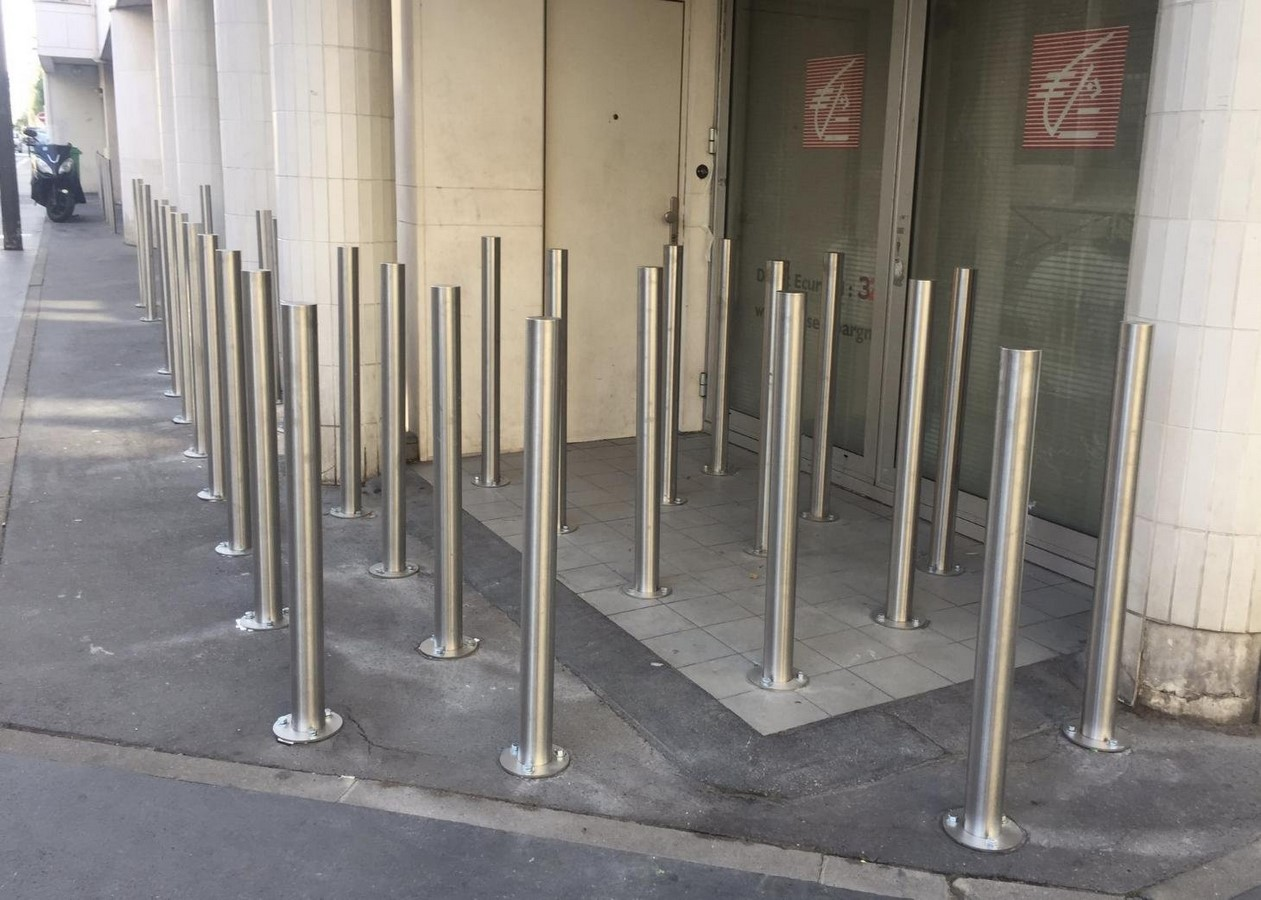
Image Source: demilked.com
Some examples of such designs in France include stone pillars alongside the Carrefour supermarket in Boulevard de Clichy, metal bars and rock studs blocking a corner near Gare du Nord, uneven bars over a vent in Saint –Ouen and metal spikes drilled into steps around the Sixième Arrondissement de Marseille.
9. Sectioned Benches in England
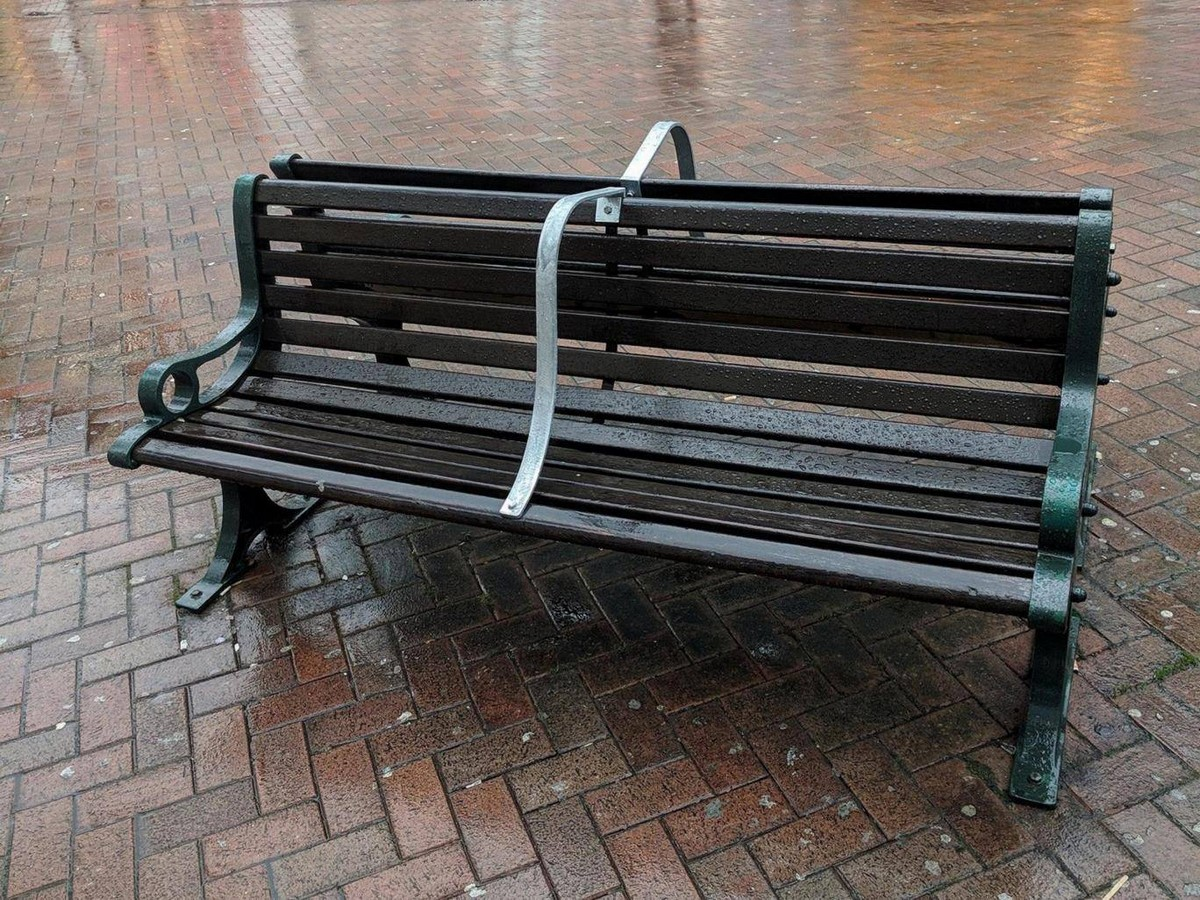
Image Source: re-thinkingthefuture.com
Many public spaces in England have installed metal bars on their benches. These metal bars make lying on the benches impossible. Therefore, homeless people cannot sleep on them. This segmenting of benches also limits their seating capacity, obstructing ease of public use more generally.
10. Under-Road Spikes in Guangzhou, China
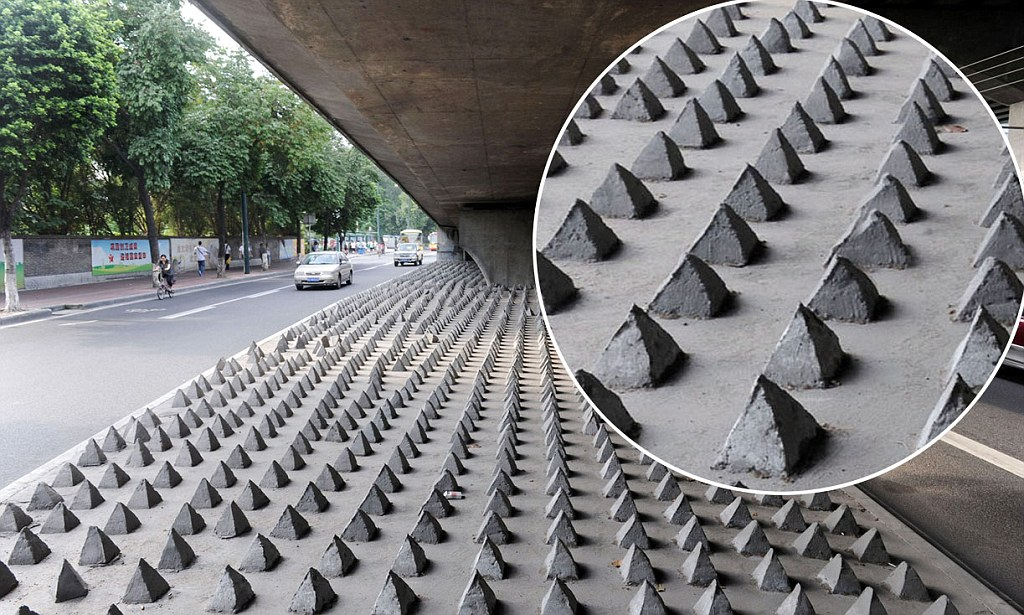
Image Source: dailymail.com
These concrete spikes beneath the Huangshi expressway cover roughly 200 square meters. This hostile design makes it impossible for people to take refuge under this road, prohibiting homeless individuals from using the bridge to sleep. According to the residents, people used to gather under the bridge but have since been forced to move out.
11. Sidewalk Boulders in San Francisco, USA
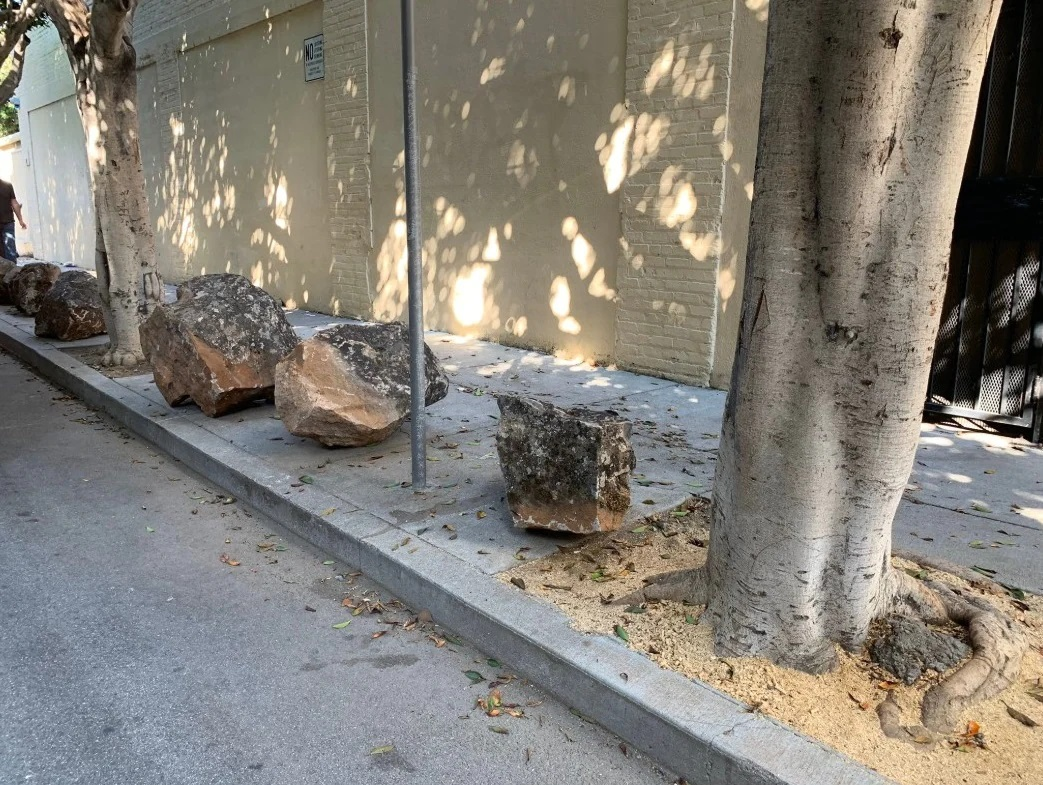
Image Source: washingtonpost.com
In a local sidewalk in California, the residents installed two dozen boulders. While it might look like a sidewalk decoration, this anti-homeless design was used to block parts of this sidewalk for all pedestrians. Also, with the boulders, the homeless could no longer use this place as a resting place.
Final Take on Anti-homeless Architecture
Anti-homeless architecture is all about keeping homeless people from living in public places. You can see this in the features and examples we’ve looked at. While many people may not appreciate this design and term it inhumane, it’s hard to deny that anti-homeless architecture is becoming quite popular in more urban places.
Featured Image Source: edition.cnn.com

